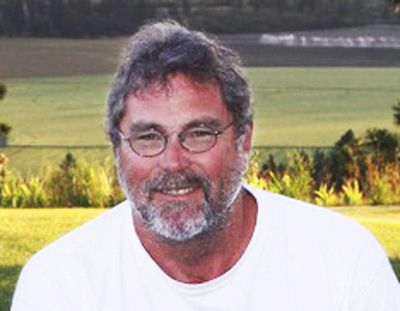Book Notes: Author’s first novel scores with critics

This past spring, Mt. Spokane High School English teacher Bruce Holbert published his first novel, “Lonesome Animals,” with Counterpoint Press. Since then, the Western detective story has garnered good reviews from readers at amazon.com and critics at papers such as the Oregonian and Seattle Times, drawing comparisons to Larry McMurtry and Cormac McCarthy. Times critic Adam Woog called it “a brilliant and utterly compelling debut.”
The book is getting some end of the year love, too. Woog put “Lonesome Animals” on his list of the year’s best mysteries, along with Dennis Lehane’s “Live by Night” and Peter Robinson’s “Before the Poison.” Slate.com senior editor Dan Kois picked the novel among the year’s best, along with Katherine Boo’s “Behind the Beautiful Forevers” and Michael Chabon’s “Telegraph Avenue.”
“Lonesome Animals” rings true to critics probably because it has a foothold in fact. The story, about a retired lawman on the hunt for the man behind a series of grisly murders of American Indians, is set in the Okanogan Mountain region where Holbert grew up. His main character, Arthur Strawl, is based on his own great-grandfather, Arthur Strahl, an Indian scout and Grand Coulee pioneer who murdered his son-in-law, Holbert’s grandfather.
Holbert, a University of Iowa Writers Workshop graduate who also writes nonfiction and poetry, was gracious enough to answer some questions about his book and his career. Read the interview below.
Q. You’ve been writing for a while. What made you decide to tackle a novel?
A. I’ve actually been working on a number of longer pieces. With a family and job, I write in fits and starts and this just happened to be the book that took shape first.
Q. Where did the story of “Lonesome Animals” come from?
A. My experience with the violence and the Western myth in my own life and in my family’s history.
Q. What is it about the Okanogan country that spoke to you as a writer?
A. My home is in the Grand Coulee area where four counties (Ferry, Douglas, Grant, and Okanogan) meet within a few miles of one another. The variety of the landscapes intersecting at one of the biggest concrete structures in the world was too much rife with metaphor for me to resist.
Q. Am I correct in reading that you haven’t quit your day job? What keeps you teaching?
A. Working with interesting people – both peers and students – and my family’s desire to eat.
Q. What are you working on now?
A. A book called “History of a Happy Family.” It takes place between 1918 and the 1970s and is the closest I’m likely to come to writing a love story.